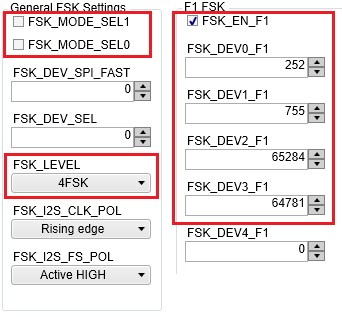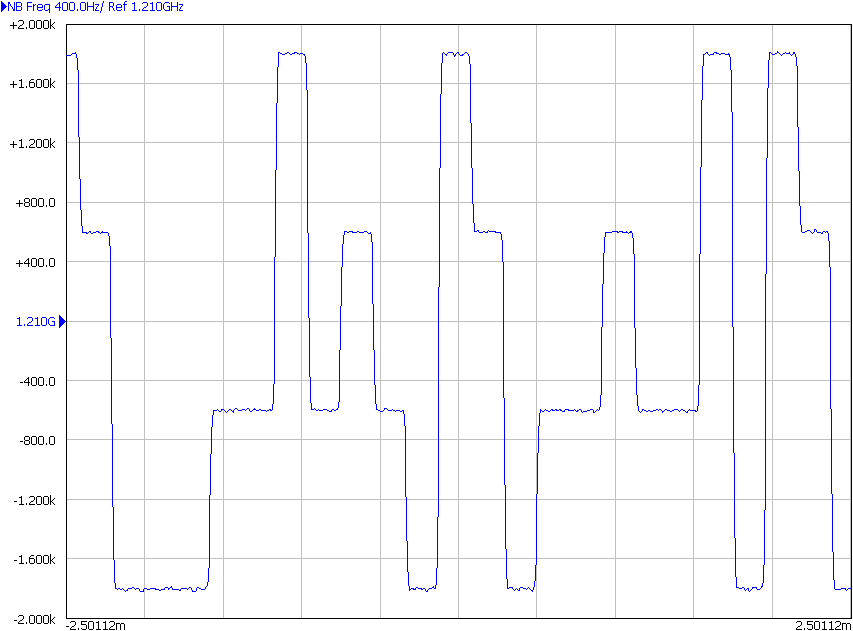SNAU182A March 2021 – May 2022
3.2.1 FSK Modulation
Direct digital FSK modulation is supported in LMX2571. FSK PIN mode supports discrete 2-, 4-, or 8-level FSK modulation while other FSK modes support arbitrary level FSK modulation. Table 3-2 is an FSK PIN mode example.
Table 3-2 FSK PIN Mode Example
| PARAMETER | EXAMPLE VALUE |
|---|---|
| Phase detector frequency | 80 MHz |
| CHDIV1 | Divided by 4 |
| CHDIV2 | Divided by 1 |
| PLL_DEN | 224 |
| Prescalar | 2 |
| Frequency deviation | ±600 Hz; ±1800 Hz |
Continue to toggle the FSK_D[1:0] and FSK_DV pins, the output is a discrete 4-level FSK modulated signal.
 Figure 3-3 FSK PIN
Mode Setting
Figure 3-3 FSK PIN
Mode Setting Figure 3-4 FSK PIN Mode
Figure 3-4 FSK PIN Mode